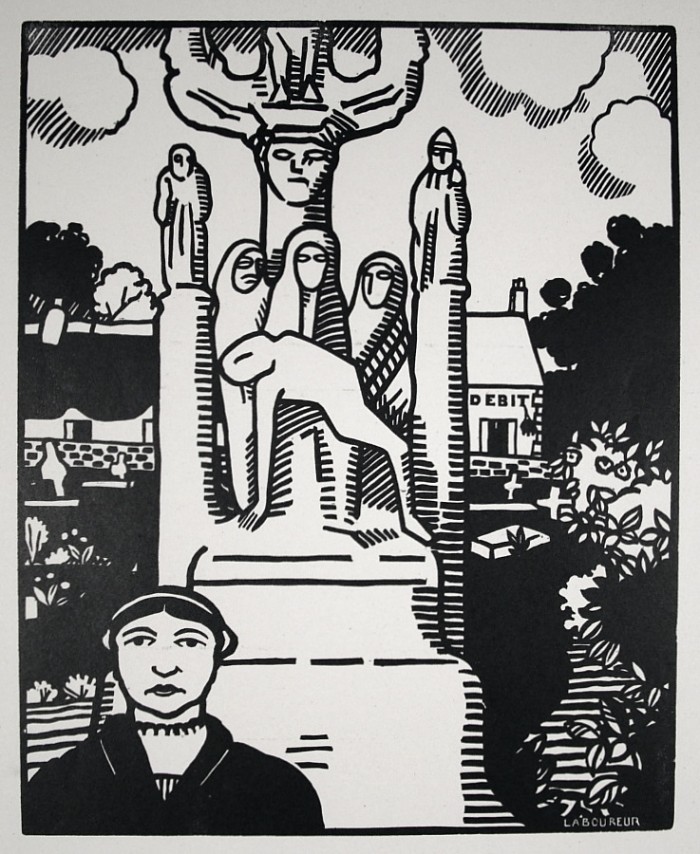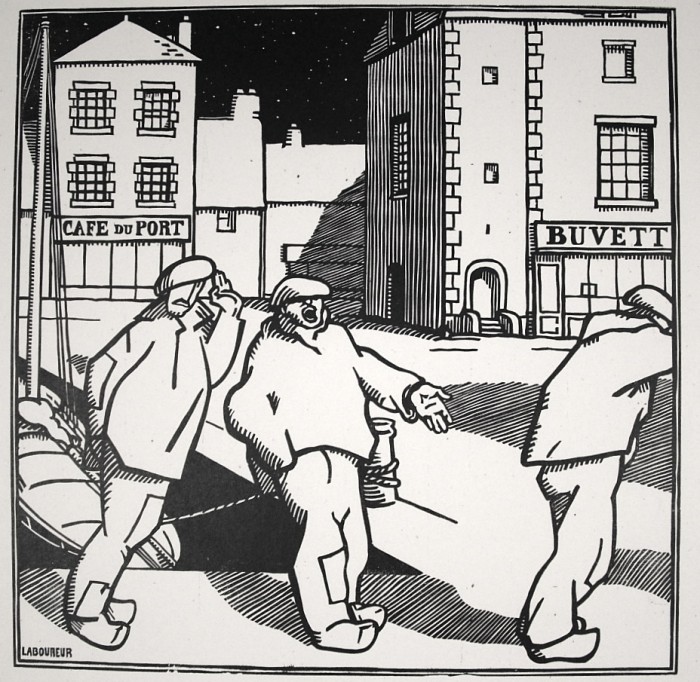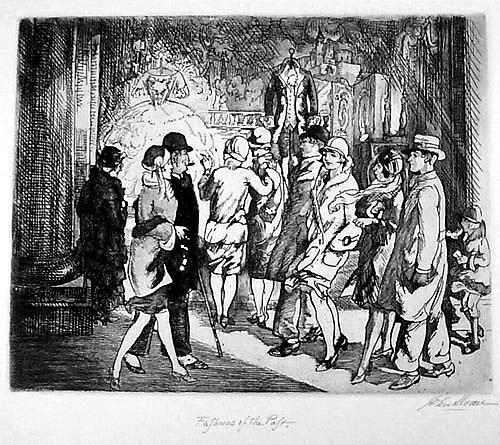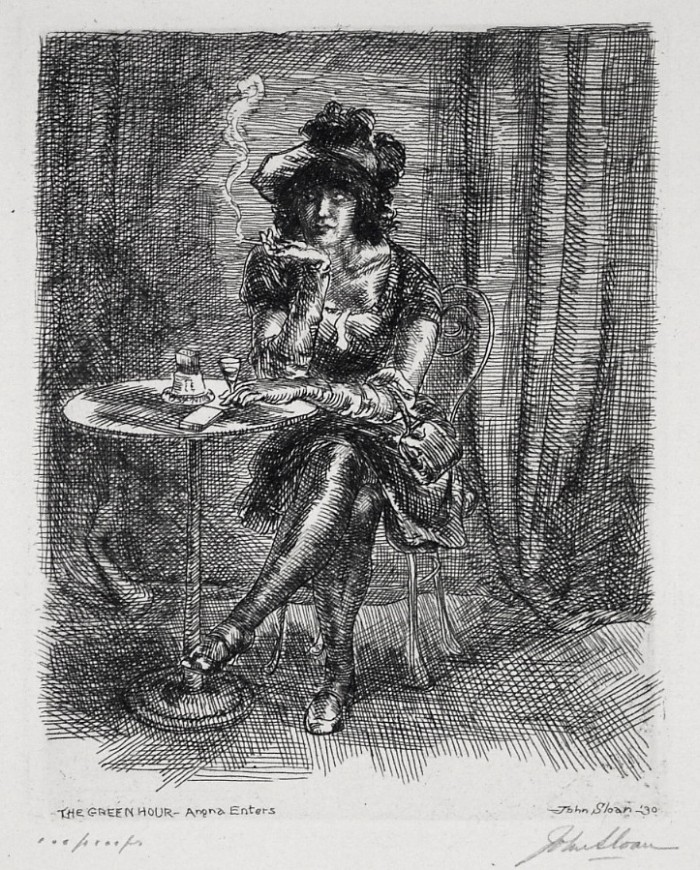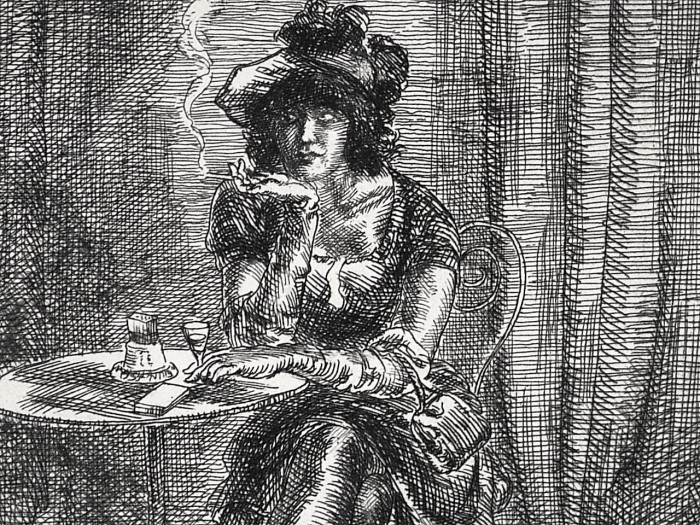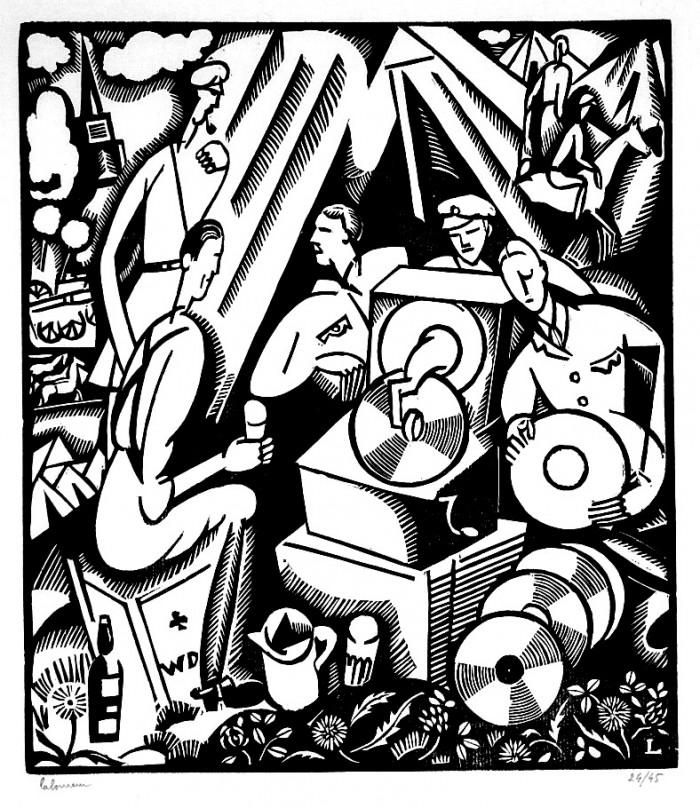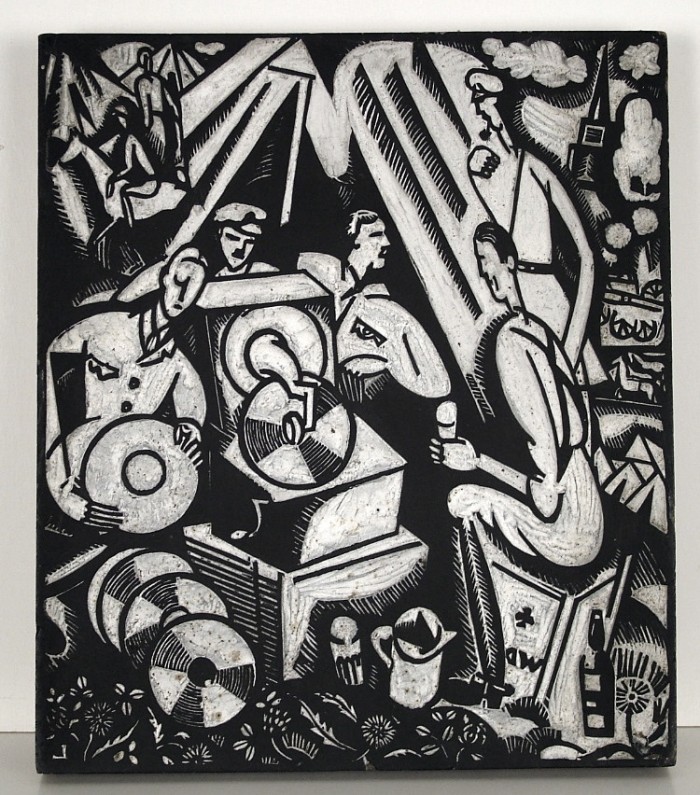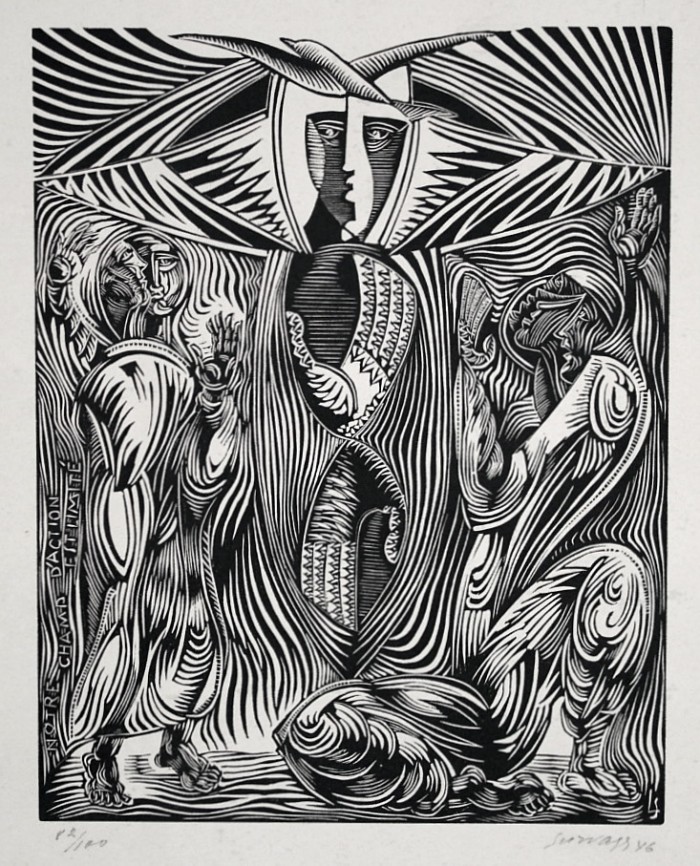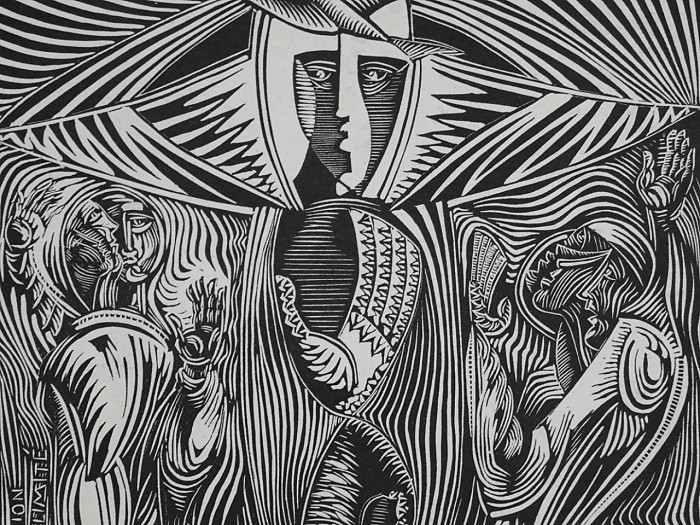Quatre Images Bretonnes, album of 4 woodcuts, 1912-14
Friday, February 26th, 2010Jean-Emile Laboureur (1877-1943), Quatre Images Bretonnes, album of 4 woodcuts, 1912-14, signed on the justification page and numbered 18. Reference: Sylvain Laboureur 681, 695, 698, 706; second states (of 2), from the edition of 130 on Arches paper (there were an additional 10 issued on Japan, and L. 681, 695, and 698 were also issued in editions of 35-40 prior to the album). Including: the Title Page; justification page, index page, and the four woodcuts. In generally good condition, a nick on the cover edge, browning toward paper edges. The full sheets, printed in black on a wove Arches paper, the full sheets 22 1/4 x 19 1/2 inches.
Very good impressions of these early cubist works.
The album includes these woodcuts: Les Matelots (L. 681), 1912, 13 3/4 x 13 3/4 inches; Le Calvaire Breton (L. 695), 1913, 14 1/2 x 11 5/8 inches; La Rentree au Port (L. 698), 1913, 9 3/4 x 14 inches; L’Arrivee du Poisson (L. 706), 1914, 11 5/8 x 11 5/8 inches.
These works were done in the years 1912-1914, and so were separated chronologically in the Loyer catalogue of Laboureur’s graphic work; they were regrouped as a set for the Sylvain Laboureur catalogue.
The album is of substantial interest insofar as it documents a turning point in the influence of cubism on Laboureur’s work: in the earlier works (L. 681, 695) one sees the modernist imagery which Laboureur had begun to employ by this time, and in the only slightly later works (L. 698 of 1913 and L. 706 of 1914) one can see the blossoming of Laboureur’s personalized cubism. Indeed, La Rentree au Port, shown at the Salon d’Automne in 1913, was widely commented on by contemporary critics as influenced by cubism, while retaining the personal idiosyncracies that Laboureur was known for; the last woodcut (L. 706) is also a quite successful interpretation of cubism, again very different in means and manner from the first two cuts.
$850 the set of 4

